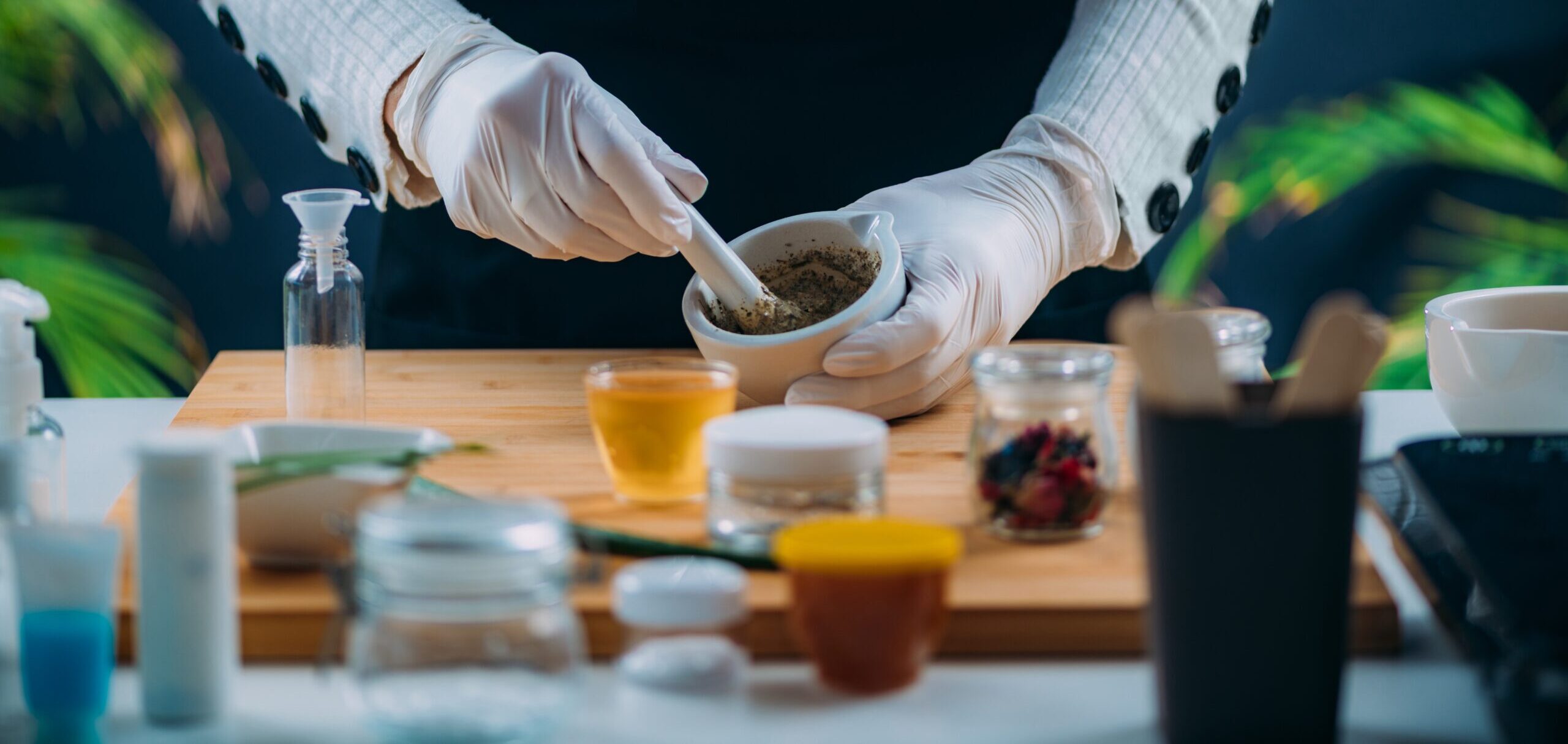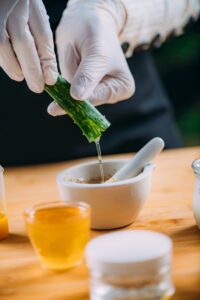
Introduction
Sunscreen is an essential part of our skincare routine, guarding our skin against the harmful effects of UV radiation. While store-bought sunscreens are readily available, a growing number of people are turning to DIY sunscreen as a more natural and customizable alternative. In this blog post, we’ll explore why DIY sunscreen is gaining popularity, the key ingredients involved, the best UV filter options, and the associated risks and benefits.
Why Choose DIY Sunscreen
1. Control Over Ingredients:
One of the primary reasons people opt for DIY sunscreen is the control it offers over the ingredients. Many commercial sunscreens contain chemical UV filters that some individuals may be sensitive to. By making your own sunscreen, you can select natural and organic ingredients, minimizing the risk of skin irritation.
2. Customization:
DIY sunscreen allows for customization to suit different skin types and preferences. You can adjust the SPF level, add specific skin-nourishing ingredients, and even experiment with scents.
3. Avoiding Potentially Harmful Chemicals:
Some people are concerned about the chemicals found in commercial sunscreens, such as oxybenzone and octinoxate. DIY sunscreens can be formulated without these ingredients, providing a safer option.
The Active Ingredient in DIY Sunscreen:
The active ingredient in sunscreen is what provides protection against UV radiation. Zinc oxide and titanium dioxide are the two main choices for DIY sunscreens.
1. Zinc Oxide:
Zinc oxide is a broad-spectrum UV filter that provides protection against both UVA and UVB rays. It is a physical sunscreen ingredient, working by reflecting and scattering UV rays away from the skin. It’s considered one of the best options for DIY sunscreen due to its effectiveness and safety profile.
2. Titanium Dioxide:
Similar to zinc oxide, titanium dioxide is a physical UV filter. It forms a protective barrier on the skin’s surface, reflecting and blocking UV rays. While effective, some people prefer zinc oxide due to concerns about the nanoparticle form of titanium dioxide.
Risks and Benefits of DIY Sunscreen:
Benefits:
– Customization: DIY sunscreen allows you to create a product that suits your skin’s unique needs.
– Natural Ingredients: You have the option to use natural, eco-friendly, and organic ingredients.
– Avoiding Chemicals: DIY sunscreen lets you skip chemicals like oxybenzone and octinoxate.
Risks:
– Inaccurate SPF: Achieving the desired SPF level can be challenging without precise measurement tools.
– Inadequate Protection: Homemade sunscreens may not provide the same level of protection as commercial products.
– Contamination: If not prepared and stored properly, DIY sunscreen can become contaminated, increasing the risk of skin issues.
– Allergic Reactions: DIY skincare products do not undergo rigorous safety testing and therefore can lead to rashes and skin outbreaks in susceptible individuals
Popular Ingredients:
Creating your own natural sunscreen is a wonderful way to customize your skincare routine and avoid certain chemicals. Here are the top 10 ingredients commonly used in DIY natural sunscreens:
1. **Zinc Oxide** A physical UV filter that provides broad-spectrum protection against UVA and UVB rays. It’s a cornerstone ingredient in natural sunscreens.
2. **Titanium Dioxide**: Another physical UV filter similar to zinc oxide, offering protection by reflecting and scattering UV radiation.

3. **Carrier Oils**: Oils like coconut oil, almond oil, or jojoba oil can act as a base for your sunscreen, helping to spread the active ingredients evenly on your skin.
4. **Shea Butter**: Shea butter is known for its moisturizing properties and can add thickness and consistency to your sunscreen.
5. **Beeswax**: Beeswax is often used to give DIY sunscreens a more solid texture and to increase water resistance.
6. **Vitamin E Oil**: This antioxidant not only helps preserve the sunscreen but also nourishes the skin and may offer some UV protection.
7. **Essential Oils**: Some essential oils, like lavender, carrot seed, or raspberry seed oil, are believed to offer natural sun protection and add pleasant scents.
8. **Red Raspberry Seed Oil**: This oil is reputed to have a higher SPF, making it a popular addition to natural sunscreens.
9. **Carrot Seed Oil**: Carrot seed oil is believed to have natural SPF properties and is often included for extra sun protection.
10. **Aloe Vera Gel**: Aloe vera provides soothing and hydrating properties to your sunscreen while helping to maintain its spreadability.
Remember that when creating your DIY natural sunscreen, it’s essential to understand the SPF you’re achieving, and it may vary depending on the concentration of zinc oxide or titanium dioxide. Also, perform a patch test on a small area of your skin to ensure you don’t experience any adverse reactions to the ingredients.
Conclusion:
DIY sunscreen can be a great alternative for those looking to take control of their skincare routine and avoid potentially harmful chemicals found in some commercial sunscreens. Zinc oxide, a physical UV filter, is a top choice for DIY sunscreens due to its effectiveness and safety. However, it’s important to weigh the benefits of customization against the risks of inaccurate SPF and inadequate protection. Ultimately, whether you choose store-bought or DIY sunscreen, protecting your skin from the sun’s harmful rays should remain a top priority. Always consult with a dermatologist or skincare professional for personalized advice, and particularly if you have specific skin concerns or conditions.
Previous Post Next Post